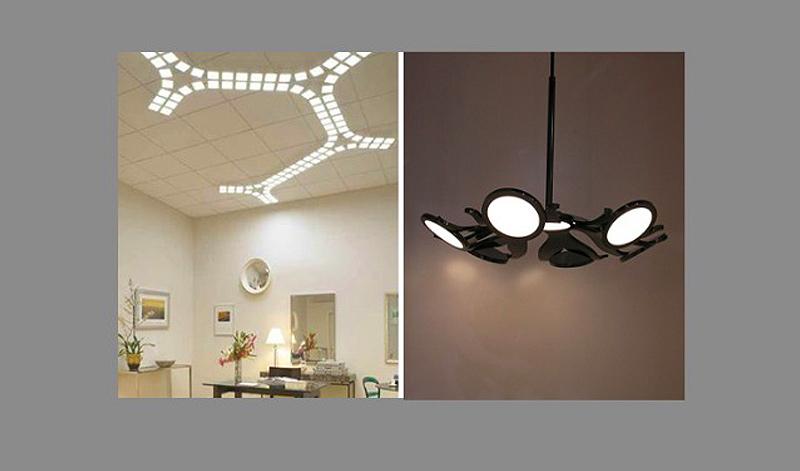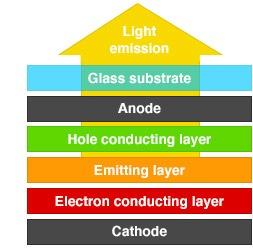
LED Lighting Goes Organic
Organic products are growing in popularity. Is LED lighting joining the trend? Organic light-emitting diodes (OLEDs) are not exactly all natural, but this innovative technology holds promise in both display lighting and general illumination. While OLED products are still emerging in the marketplace, many industry experts believe they have a bright future.
How are OLEDs different?
OLEDs are an offshoot of conventional LED technology. An LED is a semiconductor diode, which is a small chip of silicon treated with chemical elements. These elements help to create light by moving electrons to produce photons of light. In simple terms, electricity goes in and light comes out, thanks to the semiconductive material. A conventional LED fixture typically consists of multiple rows of these tiny semiconductor diodes.
OLED technology takes this concept and basically flattens it out. Instead of an array of LED diodes, OLEDs use layers of thin light-emitting films. What’s “organic” about OLEDs? The light-emitting films consist of organic carbon-based materials. Conventional LEDs, by contrast, use semiconductors that contain heavy metals, such as gallium arsenide phosphide.
How do OLEDs make light?

The basic structure of an OLED consists of four primary layers:
- Substrate provides the underlying structure of the OLED
- Cathode which injects electrons
- Anode draws electrons and adds electron holes
- Organic layers in between the cathode and anode.
The organic layers break down into three parts. The hole conducting layer transports electron holes from the anode. The emitting layer brings in electrons from the cathode and holes from the anode. This is where the light is produced. The electron conducting layer transports electrons from the cathode.
When electric current is applied to the organic material, negative electrons are injected from the cathode and positive electron holes enter from the anode. The negative-positive interaction causes the electrons and holes to mix and the organic layer enters a high-energy state. When the energy level goes down in the organic layer, it gives off light.
What are the benefits of OLEDs?
Organic and conventional LEDs are highly efficient, but OLEDs offer some potential advantages for general lighting:
- Easy on the eyes. Conventional LEDs emit bright light directly. OLEDs can be configured as more diffuse light sources that cover a large area. The softer light can be viewed directly with less need for lenses or louvers to cut the glare.
- Design flexibility. OLEDs can be bendable and made into almost any shape. They also can be transparent, emitting light from either side of the device. These features greatly expand lighting design possibilities.
- Small footprint. OLEDs are very thin. This increases the visual appeal and allows for easy attachment to walls and ceilings.
What does the future look like?
OLEDs are still emerging in the general lighting market. They are visually appealing, especially for television screens, but are not yet used in many practical lighting applications. There are OLED products now available that offer efficacies of 75 lumens per watt and a color rendering index (CRI) of greater than 90, according to the U.S. Department of Energy. OLED technology continues to advance.
Cost is a major barrier to widespread implementation. Until prices come down to be more in line with conventional LEDs and other high-efficiency lighting products, OLEDs may be limited to niche applications.